Category Archives: Travel Tips
Best Movies Africa: Exploring Cinematic Treasures from the Continent
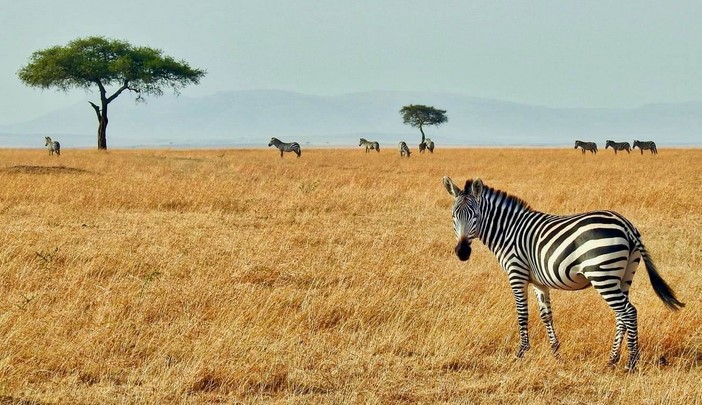
Source:https://www.nomadicmatt.com
When global audiences think of outstanding films, they often reference Hollywood blockbusters or European art-house cinema. However, Africa’s film industry is undergoing a renaissance that deserves international attention. From the bustling streets of Lagos to the historic medinas of Marrakech, African filmmakers are creating compelling stories that challenge stereotypes and offer authentic insights into the continent’s diverse cultures. The best movies Africa has produced not only reflect local realities but also resonate universally, bridging gaps in understanding and redefining African storytelling on the global stage.
1. A Vibrant Tapestry of Regional Film Industries
Africa is not a monolith, and neither is its cinema. The continent is home to a diverse array of regional film industries, each with its own style, language, and thematic focus. The most famous of these is Nollywood, Nigeria’s prolific movie industry, which ranks among the top film producers globally in terms of output. Known for its fast-paced production schedules and deeply rooted narratives, Nollywood has created stars and stories that captivate not only Nigerians but also millions across the African diaspora.
Meanwhile, South Africa’s film industry offers high production value and often focuses on social justice, apartheid legacy, and identity. Films like Tsotsi (2005), which won the Academy Award for Best Foreign Language Film, demonstrate the country’s cinematic potential. South African directors are increasingly gaining international recognition for their storytelling techniques, technical mastery, and bold thematic choices.
North Africa, especially Morocco, Egypt, and Tunisia, has a rich cinematic history that spans decades. Egyptian cinema, in particular, was once known as the “Hollywood of the Middle East.” Contemporary films from the region explore themes of religion, politics, and gender, often navigating strict censorship to convey powerful messages.
Subheading: East Africa and the Rise of Independent Voices
Though less industrialized than Nollywood or South African cinema, East African countries like Kenya, Uganda, and Tanzania are making waves with independent films. These productions often have limited budgets but excel in creativity and authenticity. Films such as Rafiki (2018) by Wanuri Kahiu challenged local laws and sparked global debates about LGBTQ+ rights in Africa. The movie premiered at the Cannes Film Festival, showing that East African stories are gaining traction on the international scene.
Similarly, Ethiopia’s growing film community is beginning to attract attention with dramas rooted in the country’s complex history and culture. These films offer nuanced perspectives and provide a counter-narrative to external portrayals of the region.
2. Themes that Define African Cinema
African cinema is defined not only by its geography but by the themes it tackles. Storytelling across the continent is deeply connected to history, community, and identity. One of the most persistent themes is post-colonial identity—filmmakers examine the lingering effects of colonialism and how they manifest in modern societies. La Noire de… (1966) by Senegalese director Ousmane Sembène, often referred to as the father of African cinema, was one of the earliest films to explore this issue.
Another central theme is gender and the role of women in society. Films like The Figurine (Nigeria) and Yomeddine (Egypt) delve into how women navigate traditional roles, societal expectations, and modernity. These stories often blend personal struggles with larger cultural contexts, making them relatable across global audiences.
Conflict and reconciliation are also explored, particularly in countries that have experienced civil war or ethnic tensions. Rwandan cinema, for instance, includes poignant works like Sometimes in April and Kinyarwanda, which reflect on the genocide and the country’s journey toward healing.
Additionally, African science fiction and fantasy—dubbed Afrofuturism—is a growing genre that combines African mythology with speculative futures. This movement was popularized internationally by the success of Black Panther, but African filmmakers like Neill Blomkamp (District 9) and Wanuri Kahiu have long been pushing the boundaries of genre storytelling.
3. Global Recognition and Streaming Platforms
The last decade has seen a surge in international recognition for African films. Film festivals like FESPACO (Panafrican Film and Television Festival of Ouagadougou) have provided a platform for decades, but now, global festivals like Berlinale, Sundance, and Toronto International Film Festival regularly feature African films.
Streaming platforms such as Netflix, Showmax, and Amazon Prime Video have played a pivotal role in democratizing access to African cinema. Netflix, in particular, has invested heavily in African content, launching original productions like Queen Sono (South Africa), Blood & Water (South Africa), and The King’s Horseman (Nigeria). These platforms provide unprecedented exposure and encourage cross-cultural dialogue by making films accessible worldwide.
Moreover, African diasporic filmmakers are contributing significantly to the narrative, often creating stories that straddle two cultures. This adds a layered perspective to the cinematic conversation and enriches the storytelling with themes of migration, identity crisis, and cultural duality.
As the global appetite for diverse stories grows, there has never been a better time to explore the best movies Africa has to offer. These films are not only artistic expressions but powerful cultural documents that capture the continent’s complexity, resilience, and creativity. From gritty urban dramas and heartwarming comedies to historical epics and sci-fi adventures, African cinema offers something for every viewer. As filmmakers continue to push boundaries and gain global platforms, the world is finally beginning to recognize the rich tapestry of voices that have always existed in African storytelling.
Europa Cafeteria: Dining in the Heart of the European Parliament
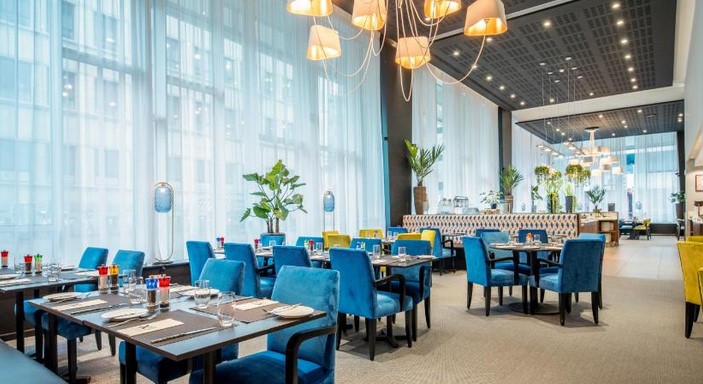
Source:https://q-xx.bstatic.com
Tucked within the corridors of power and diplomacy in Brussels lies a lesser-known but culturally significant destination: the Europa cafeteria. Located inside the European Parliament complex, this dining venue serves not only as a place to eat but as a symbol of unity, diversity, and efficiency that mirrors the ethos of the European Union itself. For Members of the European Parliament (MEPs), diplomats, journalists, and visitors, the cafeteria offers more than a meal—it provides a snapshot of Europe’s culinary variety and political life, all within a single shared space.
1. A Culinary Crossroads in a Political Hub
The European Parliament, often seen as a place of debate and decision-making, also operates as a microcosm of European society. Nowhere is this more evident than in the Europa cafeteria. Every day, hundreds of people from across the continent pass through its food lines, sit together at its tables, and engage in conversations that span languages, ideologies, and cultural backgrounds.
The menu reflects this multicultural vibrancy. From hearty German schnitzels to Mediterranean salads, French pastries to Eastern European stews, the offerings rotate to represent the various cuisines of EU member states. Special themed weeks are held regularly, featuring traditional dishes from a selected country, allowing staff and visitors alike to experience new tastes and traditions.
This gastronomic diplomacy complements the legislative work being done just meters away. The idea is simple: shared meals encourage shared understanding. When parliamentarians and staff eat together, they also build relationships that extend beyond official negotiations. Over coffee and regional specialties, alliances are formed, and perspectives are broadened.
Subheading: Behind the Scenes – Logistics and Sustainability
Running a cafeteria that serves hundreds of diverse meals daily in a highly secure and bureaucratic environment is no small feat. The Europa cafeteria is operated by a dedicated catering team that manages not only variety and nutrition but also sustainability and food sourcing.
Procurement focuses heavily on organic, seasonal, and local produce. Much of the meat and dairy used comes from European farms that meet strict animal welfare and environmental standards. Vegan and vegetarian options are standard—not exceptions—ensuring that dietary needs and environmental concerns are considered.
The cafeteria has also introduced a waste-reduction initiative in line with the European Green Deal goals. Single-use plastics have been phased out, food waste is carefully monitored, and composting and recycling are the norm. Digital ordering systems and cashless payments streamline operations while reducing the facility’s carbon footprint.
In addition, the architecture and layout of the cafeteria support its broader mission. Designed with open spaces, natural lighting, and communal seating, the venue encourages interaction. It’s common to see policymakers sitting beside interns or visiting university groups, all eating together in a democratic and relaxed environment.
2. Who Dines at Europa Cafeteria—and Why It Matters
While it may seem like just another institutional eatery, the Europa cafeteria plays an important role in the ecosystem of European politics. The clientele ranges from elected officials to interpreters, researchers, journalists, and civil servants. Each meal served helps sustain the individuals shaping policies that affect over 400 million citizens.
More importantly, the cafeteria serves as an informal extension of the Parliament itself. Policy ideas are discussed casually over meals, and spontaneous meetings can occur without formal scheduling. The mix of people and perspectives found here often leads to innovative problem-solving and stronger cross-national cooperation.
Occasionally, the Europa cafeteria even becomes a venue for informal diplomacy. During particularly tense legislative sessions or international summits, the relaxed environment of the dining hall can be a welcome respite—a place where heated discussions cool into civil dialogue over shared desserts or coffee.
There are also cultural programming events hosted in the cafeteria space, including food fairs, small exhibitions, and performances. These are strategically designed to foster greater understanding and appreciation of Europe’s rich heritage.
3. Visiting the Cafeteria: Access and Experience
Access to the Europa cafeteria is generally limited to those with credentials for the European Parliament, including MEPs, accredited assistants, journalists, staff members, and registered visitors. However, on certain open days and educational tours, the public may be granted a glimpse into this unique space.
For those fortunate enough to dine at the Europa cafeteria, the experience is both practical and symbolic. Meals are affordably priced, portions are generous, and service is efficient. But beyond the logistics, what stands out most is the environment—polished yet unpretentious, communal yet secure, diverse yet unified.
Dining at the cafeteria allows one to observe the rhythm of European governance at a human scale. Laughter echoes across tables, quick meetings happen between bites, and multilingual conversations flow as freely as the coffee. In many ways, it is the heartbeat of the institution—where policy meets personality.
In a building dedicated to negotiation and lawmaking, the Europa cafeteria offers a more personal dimension of European cooperation. Through shared meals, sustainable practices, and cultural inclusion, the cafeteria embodies the EU’s core values of unity in diversity. Whether you’re a policymaker shaping directives or a visitor passing through on a tour, the cafeteria provides a taste—not only of Europe’s cuisine—but of its cooperative spirit. As the EU continues to evolve, its dining hall remains a steadfast reminder that sometimes, the most meaningful diplomacy begins with a shared meal.
Travel Books Europe: Inspiring Your Next Continental Adventure
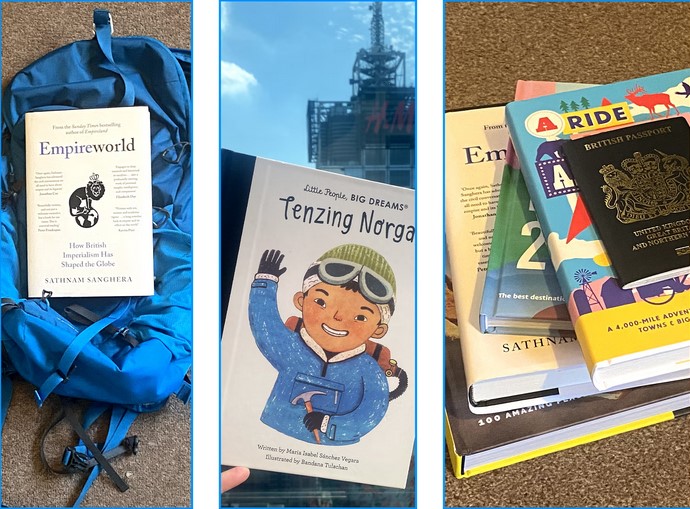
Source:https://static.independent.co.uk
Traveling through Europe offers a tapestry of experiences—cobblestone streets in Prague, vineyard hills in Tuscany, fjords in Norway, and ancient ruins in Athens. For those looking to explore the continent with more insight, depth, or even daydreams before the journey begins, travel books Europe offers a gateway into its diverse landscapes, histories, and cultures. Whether you’re a seasoned traveler seeking deeper context or a first-time visitor searching for inspiration, the right book can transport you across borders, eras, and perspectives—all from your armchair or backpack.
1. Understanding the Role of Travel Books in Modern Exploration
In an era dominated by digital reviews and online itineraries, you might wonder about the relevance of printed travel books. But for many, travel books remain indispensable. Unlike fleeting web searches, well-written travel books provide carefully researched, curated, and often beautifully narrated information that encourages thoughtful exploration.
The Enduring Relevance of Print and Narrative
Travel books come in various forms: practical guidebooks, literary memoirs, historical deep-dives, and photographic essays. Each type serves a different purpose. Guidebooks from publishers like Lonely Planet, Rick Steves, and Rough Guides offer logistical clarity and up-to-date recommendations. On the other hand, literary travelogues such as those by Patrick Leigh Fermor or Bill Bryson reveal personal journeys and cultural observations that resonate on a human level.
As much as Google Maps and TripAdvisor assist in real-time decisions, travel books give readers a more immersive and comprehensive understanding of a destination. They paint a picture of not just what to see, but how to experience it meaningfully.
2. Recommended Travel Books for Exploring Europe
Whether you’re interested in food, architecture, history, or solo backpacking, there’s a travel book tailored to your interests. Below are notable categories and recommendations to help guide your European exploration.
1. Classic Guidebooks
- Rick Steves’ Europe Series – Especially suited for American travelers, Rick Steves’ books offer practical, user-friendly guides focusing on cultural immersion, budget travel, and local experiences. His guides to Italy, France, and Spain are particularly popular.
- Lonely Planet: Europe on a Shoestring – A favorite among younger or budget-conscious travelers, this guidebook compiles top destinations across Europe with advice on affordable accommodations, transport, and attractions.
2. Historical and Cultural Deep Dives
- “Europe: A History” by Norman Davies – This sweeping history of Europe helps travelers appreciate the context behind ancient cities, battlefields, and evolving borders.
- “The Discovery of France” by Graham Robb – Although focused on one country, this book illustrates the rich diversity within even a single European nation and how regional identities have shaped national ones.
3. Personal Narratives and Memoirs
- “Neither Here Nor There” by Bill Bryson – A humorous yet insightful chronicle of Bryson’s travels across Europe, offering both personal anecdotes and sharp cultural observations.
- “A Time of Gifts” by Patrick Leigh Fermor – Widely regarded as a literary classic, this is the first installment of Fermor’s journey on foot from the Netherlands to Istanbul in the 1930s. Rich in historical and cultural references.
4. Niche Interests
- “The Monocle Travel Guide Series” – Ideal for design-focused travelers and urban explorers who are looking for upscale local experiences, architecture, and lifestyle insights in cities like Lisbon, Berlin, or Vienna.
- “How to Travel Without Seeing” by Andrés Neuman – A poetic collection of impressions that reveals how rapid travel can still deliver powerful cultural insights, especially across multiple destinations.
3. How Travel Books Shape Your Experience on the Ground
Unlike apps and blogs that cater to current trends, travel books often delve deeper into the “why” behind what we see. They frame your perception of a place and often encourage travelers to venture beyond typical tourist paths.
The Benefits of Pre-Trip and On-the-Go Reading
Reading travel books before your trip helps in forming a mental map—not just of geography, but of cultural context. You’ll approach sites with more curiosity and a broader understanding of their significance.
During your trip, having a travel book on hand can help you:
- Identify hidden gems not covered in mainstream travel apps
- Engage in more meaningful conversations with locals
- Navigate cultural etiquette with greater sensitivity
- Enjoy deeper engagement with museums, landmarks, and historical sites
Moreover, well-written narratives can inspire spontaneous detours or day trips you wouldn’t have considered otherwise—like visiting a remote mountain monastery mentioned in a memoir or exploring a neighborhood known for its artists and intellectuals.
In a world of instant digital content and quick online searches, travel books Europe continues to hold a unique place in the hearts of curious travelers. These books do more than guide—they inform, inspire, and elevate the travel experience into something richer and more rewarding. Whether you’re preparing for a months-long continental journey or dreaming from your reading chair, the stories, insights, and guidance found in travel books can shape not just how you travel, but how deeply you connect with the places you go.
Nomad Internet Lawsuit: Navigating Legal Matters in the Digital Age

Source:https://miro.medium.com
In the ever-evolving landscape of digital services, the case of the Nomad Internet lawsuit stands out as a significant example of how legal frameworks are adapting to address challenges in the internet service industry. This case, involving allegations of deceptive trade practices, highlights the complexities that arise when technology intersects with consumer protection laws. As digital nomadism continues to grow, understanding such legal matters becomes crucial for both service providers and consumers.
1. Background of the Nomad Internet Lawsuit
The controversy surrounding Nomad Internet began in April 2023 when the Texas Attorney General’s Office filed a lawsuit against the company and its owners. The allegations centered on deceptive trade practices, claiming that Nomad Internet had misrepresented its relationship with legitimate wireless internet providers. Specifically, the company was accused of acquiring SIM cards from authorized providers, reprogramming them, and selling them as part of their internet service plans without proper authorization. This practice led to service disruptions for many customers when the legitimate providers detected the unauthorized use and terminated the SIM cards.
Legal Proceedings and Settlement
In June 2024, the case was resolved with a settlement agreement. Nomad Internet agreed to pay $8 million in monetary relief, which included $2 million in refunds to over 20,000 affected consumers. Additionally, the company was permanently enjoined from advertising, selling, or leasing any telecommunication or wireless data transmission services without an authorized contractual agreement with a network or service provider. Notably, the settlement was reached without any admission of wrongdoing by Nomad Internet, as the company continues to deny the allegations.
2. Implications for Digital Service Providers
The Nomad Internet lawsuit serves as a cautionary tale for digital service providers, especially those operating in niche markets like rural internet access. It underscores the importance of transparency and compliance with legal and regulatory standards. Service providers must ensure that their business practices align with consumer protection laws to avoid legal pitfalls and maintain consumer trust.
Importance of Compliance and Transparency
For digital nomad service providers, this case emphasizes the need for clear communication with customers regarding service terms, network partnerships, and any limitations of the services offered. Transparency in business operations not only helps in building a positive reputation but also mitigates the risk of legal challenges. Providers should regularly review their practices to ensure adherence to applicable laws and regulations.
3. Consumer Awareness and Protection
For consumers, especially digital nomads who rely on stable internet connections for their work and lifestyle, the Nomad Internet lawsuit highlights the necessity of due diligence before engaging with service providers. It’s essential to research and verify the legitimacy of internet service companies, understand the terms of service, and be aware of their legal standing.
Steps for Consumers to Protect Themselves
Consumers should:
- Research Providers Thoroughly: Look for reviews, ratings, and any legal actions involving the company.
- Understand Service Agreements: Carefully read and comprehend the terms and conditions before committing to any service.
- Monitor Billing Statements: Regularly check for any unauthorized charges or discrepancies.
- Report Issues Promptly: If problems arise, contact the provider immediately and keep records of all communications.
By staying informed and vigilant, consumers can better protect themselves from potential issues related to internet service providers.
The Nomad Internet lawsuit serves as a pivotal example of how legal systems are adapting to the challenges posed by the digital age. It highlights the critical need for both service providers and consumers to understand and navigate the legal landscapes that govern digital services. As the world becomes increasingly interconnected, staying informed about legal matters in the digital realm is essential for ensuring fair practices and protecting consumer rights.
Hong Kong Fun Facts: Uncovering Intriguing Tidbits About the Vibrant City
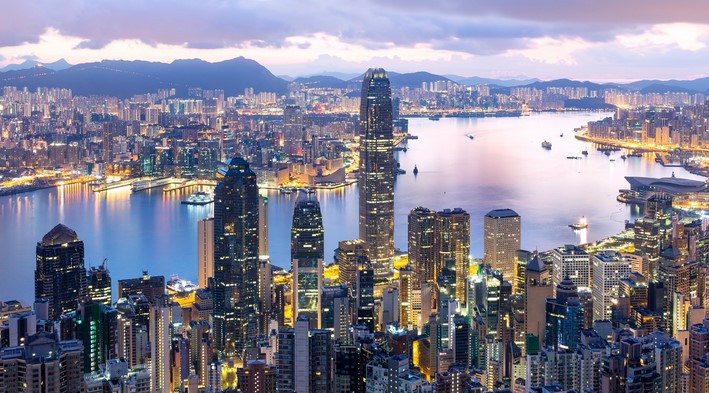
Source:https://www.agoda.com
Hong Kong is often celebrated for its gleaming skyline, bustling street markets, and status as a global financial hub—but beneath its fast-paced exterior lies a wealth of fascinating stories, traditions, and trivia that even seasoned travelers may not know. From cultural curiosities to historical oddities and architectural marvels, exploring Hong Kong fun facts offers a new perspective on this dynamic metropolis. Whether you’re planning a visit or simply expanding your knowledge, these lesser-known details will deepen your appreciation of the city’s vibrant character.
1. Geography and Urban Marvels: A City of Contrasts
Hong Kong’s landscape is a remarkable blend of towering skyscrapers and natural wonders. It offers more than just urban splendor—it is a city where mountains, beaches, and forests lie just minutes from central business districts.
A Vertical City with Green Surprises
Hong Kong holds the world record for the most skyscrapers—over 9,000 buildings exceed 14 floors, surpassing both New York City and Shanghai. Yet despite its reputation for vertical living, approximately 40% of Hong Kong’s territory is designated as country parks and nature reserves. This makes hiking trails like Dragon’s Back and Tai Mo Shan easily accessible and incredibly popular among locals.
Another architectural marvel is the Mid-Levels Escalator. Stretching over 800 meters and rising more than 135 meters in elevation, it is the world’s longest outdoor covered escalator system and serves as an unconventional, yet efficient, mode of public transport.
Limited Land, Ingenious Solutions
Due to limited land availability, Hong Kong has mastered the art of vertical and underground urban planning. One famous example is the “Monster Building” in Quarry Bay, officially known as the Yick Cheong Building. This dense residential complex became globally recognized after appearing in films and on Instagram, symbolizing Hong Kong’s unique residential architecture.
Additionally, the city’s airport—Hong Kong International Airport—was built on a man-made island, showcasing the city’s commitment to maximizing space through innovative engineering.
2. Culture and History: A Fusion of East and West
As a former British colony that returned to Chinese sovereignty in 1997, Hong Kong is a cultural fusion that manifests in everything from language and law to food and festivals.
A Legal and Linguistic Hybrid
Hong Kong operates under a system known as “One Country, Two Systems,” meaning it maintains a separate legal and economic framework from mainland China. English and Chinese are both official languages, with Cantonese being the most widely spoken dialect.
Interestingly, many street signs, legal documents, and educational materials are bilingual, which makes the city highly accessible for international visitors and businesses.
The Tradition of Feng Shui in Modern Practice
Feng Shui plays a significant role in the city’s design and planning. Many commercial buildings incorporate Feng Shui principles to attract prosperity and ward off bad energy. A prime example is the iconic HSBC Main Building in Central, which was designed without internal supporting columns and aligns with favorable Feng Shui elements. Across the street, the Bank of China Tower’s sharp angles have long been debated among Feng Shui practitioners for creating “bad energy.”
3. Everyday Life and Quirky Facts
Beyond the grandeur of skyscrapers and legal frameworks, the daily rhythms of Hong Kong life offer a treasure trove of interesting facts and cultural nuances.
Compact Living and Capsule Hotels
Hong Kong is one of the world’s most densely populated regions, and the high cost of housing has given rise to “nano flats” and capsule hotels. Some apartments are as small as 100 square feet, yet they are ingeniously designed to include kitchens, bathrooms, and storage.
Additionally, rooftop living—converting rooftops of buildings into makeshift homes—is another reality for some residents, reflecting both the creativity and challenges of living in such a tightly packed urban environment.
Octopus Card: More Than Just Public Transport
The Octopus Card is a prepaid, contactless smart card used throughout Hong Kong—not just for buses and trains, but also for paying at convenience stores, fast-food chains, vending machines, and even some clinics. Launched in 1997, it was one of the world’s first major contactless payment systems and remains a model of efficiency in urban mobility.
The Symphony of Lights and Other Nightly Traditions
Every night at 8:00 PM, more than 40 buildings along Victoria Harbour participate in the Symphony of Lights—a multimedia show involving laser beams, LED displays, and synchronized music. It’s one of the world’s largest permanent light and sound shows and serves as a dazzling reminder of Hong Kong’s technological prowess and flair for spectacle.
From vertical cityscapes and scenic hiking trails to unique cultural blends and ingenious urban innovations, Hong Kong offers a treasure trove of intriguing trivia and unforgettable experiences. Whether it’s the integration of Feng Shui into skyscraper design, the world-record escalator system, or the everyday utility of the Octopus Card, each detail reflects the city’s rich character and modern ingenuity. Exploring these Hong Kong fun facts not only reveals hidden layers of the city but also inspires deeper admiration for one of the world’s most compelling urban centers.
Vegetarian Prague Restaurants: Savoring Meatless Delights in the Czech Capital
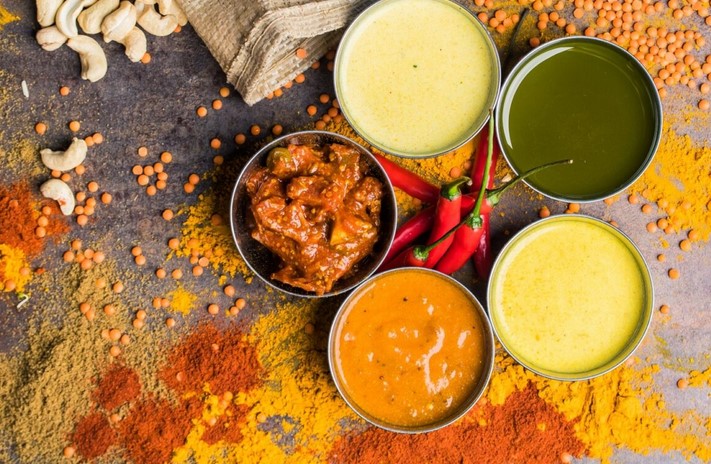
Source:https://undiscoveredpathhome.com
Once known primarily for its hearty, meat-centric cuisine—think pork knuckles, sausages, and beef goulash—Prague has undergone a culinary renaissance in recent years. The Czech capital now offers an exciting and diverse range of plant-based dining options that cater to vegetarians, vegans, and flexitarians alike. Whether you’re a long-time herbivore or a curious traveler looking to explore a different side of Czech gastronomy, you’ll be pleasantly surprised by the growing number of Vegetarian Prague restaurants that creatively combine local ingredients, international flavors, and sustainable practices. From cozy cafés to upscale bistros, the city’s vegetarian scene is both vibrant and delicious.
1. The Rise of Vegetarian Dining in Prague
While Czech cuisine has traditionally leaned heavily on meat and dairy, the country’s capital has embraced global culinary trends, including the shift toward healthier, more sustainable eating. Over the past decade, Prague has seen a noticeable rise in vegetarian and vegan establishments, reflecting changes in both local consumer habits and the international travel scene.
A Culinary Shift Influenced by Global Trends
Several factors have contributed to the emergence of Prague as a vegetarian-friendly destination. First, the increasing interest in wellness and sustainability has led many Czech chefs to rethink traditional dishes with a modern, plant-forward twist. Second, the growing community of expats and international tourists has brought a demand for more globally inspired menus, including Indian, Middle Eastern, Mediterranean, and Asian cuisines—all of which offer rich vegetarian traditions.
Even mainstream restaurants and cafés have started including vegetarian and vegan options on their menus, showing a broader acceptance of plant-based eating across the city.
2. Must-Try Vegetarian Restaurants in Prague
For travelers seeking quality meat-free meals in Prague, there are numerous standout options across the city’s charming districts.
1. Lehka Hlava (Clear Head)
Located in the Old Town, Lehka Hlava is arguably Prague’s most iconic vegetarian restaurant. With its whimsical interior and creative menu, the restaurant offers a memorable dining experience. Dishes such as tofu curry, grilled halloumi with beetroot hummus, and vegetarian burgers are beautifully presented and full of flavor. Reservations are recommended, as the venue is popular with locals and tourists alike.
2. Maitrea
Maitrea, the sister restaurant of Lehka Hlava, is located just off Old Town Square and specializes in vegetarian and vegan dishes inspired by both Eastern and Western traditions. Highlights include Thai coconut soup, lentil-based meatballs, and vegan desserts made in-house. The tranquil, Zen-inspired atmosphere makes it a perfect place to unwind after a day of sightseeing.
3. Moment Café
Located in the trendy Vinohrady district, Moment Café is a cozy, contemporary spot that’s entirely vegan. It’s a favorite among young locals and students, offering a menu that ranges from vegan bagels and burritos to cakes and excellent coffee. Their weekend brunches are particularly popular, making it a great choice for a leisurely morning.
4. Pastva
For an upscale plant-based dining experience, Pastva in Prague 5 offers modern European cuisine with an innovative vegetarian and vegan twist. Using seasonal ingredients and fine culinary techniques, the chefs here craft dishes like jackfruit goulash and beet tartare. The restaurant’s minimalist, elegant design complements its sophisticated menu.
5. Loving Hut
With multiple branches in Prague, Loving Hut is an international vegan chain offering Asian-inspired dishes like rice noodles, seitan stir-fries, and vegan sushi. It’s a great option for a quick, affordable lunch, especially for those exploring neighborhoods away from the city center.
3. Tips for Enjoying Vegetarian Cuisine in Prague
While Prague has made great strides in accommodating vegetarian diets, a little preparation can enhance your culinary experience.
Language and Menu Clarity
Although English is widely spoken in Prague, particularly in tourist areas, it’s helpful to learn a few Czech words to identify vegetarian options:
- Bez masa – without meat
- Zeleninové – vegetable-based
- Vegan and vegetariánské are often used directly on menus
When dining in more traditional or local restaurants, don’t hesitate to ask the server for vegetarian modifications. Most places are willing to accommodate reasonable requests, especially if notified in advance.
Explore Farmers’ Markets and Specialty Stores
For those staying in Prague for an extended period, exploring local farmers’ markets or organic shops like Country Life can be a great way to discover regional vegetables, plant-based snacks, and meat alternatives. These stores often stock items not found in mainstream supermarkets and provide insight into the local vegetarian culture.
Consider Vegetarian Food Tours
Joining a vegetarian or vegan food tour can be an excellent way to sample a variety of dishes while learning about Czech culinary history. Some local tour companies now offer specialized plant-based itineraries that introduce you to hidden gems and artisan producers throughout the city.
Prague is no longer just a haven for meat lovers—it has evolved into a city where plant-based dining is celebrated and creatively expressed. From artfully plated fine dining to laid-back cafés and ethnic eateries, the variety and quality of Vegetarian Prague restaurants make the city a delightful destination for meat-free travelers. Whether you’re seeking nourishing soups, innovative mains, or indulgent vegan desserts, Prague’s vegetarian food scene offers something to savor in every bite.
Best New Zealand Tour Companies: Planning Your Kiwi Adventure

Source:https://media-cdn.tripadvisor.com
New Zealand, with its awe-inspiring landscapes, rich indigenous culture, and adventure-packed activities, is one of the most coveted travel destinations in the world. From the rugged Southern Alps to the geothermal wonders of Rotorua and the pristine beaches of the Coromandel Peninsula, Aotearoa offers something for every type of traveler. But with so much to see and do, planning the perfect itinerary can be overwhelming—especially for first-time visitors. That’s where choosing from the best New Zealand tour companies becomes crucial. These expert operators not only handle logistics and transport but also enrich your journey with local insights, authentic experiences, and tailored service.
1. Understanding the Types of Tour Companies in New Zealand
Before diving into specific tour providers, it’s essential to understand the variety of tour styles available. New Zealand tour companies cater to a wide range of preferences, travel styles, and budgets.
Guided Group Tours vs. Independent Adventures
Guided group tours are ideal for travelers who want a structured itinerary and the opportunity to meet fellow explorers. These tours usually include accommodation, transport, some meals, and the services of an experienced guide. Companies like Contiki, G Adventures, and Intrepid Travel specialize in these kinds of trips and offer themed itineraries—ranging from adventure and culture to nature and food.
On the other hand, if you prefer a more flexible travel experience, consider a self-drive or custom-designed private tour. Providers such as New Zealand Self Drive Tours or First Light Travel offer fully customized packages that let you explore at your own pace, with support for accommodations, car rentals, and activity bookings.
Luxury tours are also increasingly popular. Companies like Ahipara Travel and Seasonz deliver high-end, bespoke experiences that include exclusive lodges, helicopter tours, and private wine tastings in regions like Marlborough or Hawke’s Bay.
2. Top-Rated New Zealand Tour Operators to Consider
While there are many excellent operators throughout the country, several have earned strong reputations for service quality, sustainability, and innovation.
1. G Adventures
G Adventures is known for its commitment to responsible tourism and small group experiences. Their itineraries in New Zealand often blend the North and South Islands, with highlights such as the glowworm caves of Waitomo, Māori cultural shows in Rotorua, and hiking the Routeburn Track. Ideal for solo travelers and adventure seekers, G Adventures also ensures their tours support local communities.
2. Haka Tours
Targeted primarily at the younger market, Haka Tours delivers small group tours that emphasize cultural immersion and adrenaline-packed activities. Think bungee jumping in Queenstown, surfing in Raglan, and snowboarding in Wanaka. They also offer snow tours during the winter season and accommodate various fitness levels.
3. MoaTrek
MoaTrek specializes in small group luxury tours that provide an intimate experience of New Zealand’s stunning landscapes and warm hospitality. Their all-inclusive tours often include gourmet meals, boutique lodges, and visits to lesser-known local spots, such as private gardens and family-run wineries.
4. Active Adventures
For those who want to explore the great outdoors, Active Adventures provides fully guided hiking, cycling, and kayaking tours across some of New Zealand’s most iconic and remote locations. The company’s South Island trips are especially popular, covering areas like Fiordland National Park, Mount Cook, and the West Coast glaciers.
5. New Zealand Trails
Focused on high-end walking tours, New Zealand Trails provides a luxurious approach to exploring the outdoors. Guests enjoy premium accommodation, gourmet food, and guided access to national parks. It’s a great option for travelers who want active days followed by restful nights in comfortable lodges.
3. Factors to Consider When Choosing a Tour Company
Selecting the right tour company for your New Zealand trip depends on various factors, including travel style, group size, budget, and the type of experience you’re seeking.
What to Look For
- Reputation and Reviews: Look for companies with consistently positive feedback, both on their own sites and independent platforms like TripAdvisor.
- Local Knowledge: Companies based in New Zealand often offer deeper cultural insights and better logistical support.
- Sustainability Practices: Many travelers now consider a company’s environmental and social responsibility when choosing a provider. Look for certifications like Qualmark or participation in the New Zealand Tourism Sustainability Commitment.
- Flexibility: Some companies allow you to personalize the itinerary or swap out activities based on your interests.
- Inclusions: Clarify what’s covered—transport, accommodation, meals, entrance fees—and what you’ll need to organize separately.
From guided hikes through ancient rainforests to helicopter rides over glacial fjords, New Zealand offers an unmatched variety of natural and cultural experiences. Choosing the right tour operator is key to unlocking these treasures in a meaningful and hassle-free way. Whether you’re a thrill-seeker, a luxury traveler, or someone looking to connect with local Māori traditions, the best New Zealand tour companies provide expert guidance and thoughtfully curated itineraries. With the right partner, your Kiwi adventure will be more than just a trip—it will be the journey of a lifetime.
Things to Do Midtown NYC: Experiencing the Heart of Manhattan
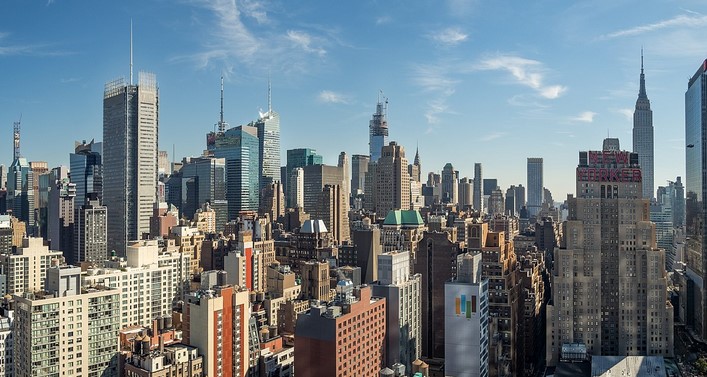
Source:https://upload.wikimedia.org
Midtown Manhattan is the dynamic heart of New York City, a bustling center where skyscrapers reach the clouds, history meets innovation, and entertainment thrives at every corner. For both tourists and locals, this district offers a rich blend of culture, commerce, and cuisine. Whether you’re here for a quick visit or an extended stay, exploring Midtown promises unforgettable experiences. From iconic landmarks to hidden gems, the variety of things to do Midtown NYC is both vast and captivating.
1. Discover Iconic Landmarks and Architectural Marvels
When people think of New York City, many of the most iconic images are rooted in Midtown. This part of Manhattan is home to some of the world’s most recognizable buildings and landmarks.
Empire State Building and The Edge
You simply can’t talk about Midtown without mentioning the Empire State Building. Standing as a monument to American ambition and design, this Art Deco masterpiece offers panoramic views from its observation decks. On a clear day, you can see as far as New Jersey, Connecticut, and Pennsylvania.
A more modern addition to Midtown’s skyline is The Edge at Hudson Yards. Though technically on the edge of Midtown West, this open-air sky deck offers a thrilling glass-floor experience with a unique view of the city below.
Grand Central Terminal: A Journey Through Time
Grand Central Terminal is more than just a transportation hub. With its celestial ceiling, whispering gallery, and gourmet food market, it’s a destination in its own right. Don’t miss the chance to admire the historic architecture or enjoy a cocktail at the famed Campbell Bar, which looks like a luxurious 1920s salon frozen in time.
2. Explore the Arts, Entertainment, and Green Spaces
Midtown NYC is a cultural powerhouse, offering world-class theater, museums, and serene green spaces amid the urban buzz.
Broadway and the Theater District
For theater lovers, Midtown is home to Broadway, where productions range from long-running classics like The Lion King to groundbreaking new shows. The Theater District around Times Square is more than just a tourist zone—it’s a living cultural ecosystem that includes off-Broadway venues, improv theaters, and playwright workshops.
While you’re in the area, don’t miss the immersive Museum of Broadway, which chronicles the rich history of theater in a stunningly interactive format.
MoMA and Other Cultural Institutions
Art enthusiasts should prioritize a visit to the Museum of Modern Art (MoMA), home to masterpieces by Van Gogh, Picasso, Warhol, and countless others. Midtown also boasts cultural gems like the Paley Center for Media and the New York Public Library’s iconic Stephen A. Schwarzman Building on Fifth Avenue.
Bryant Park: A Green Oasis in the City
Just behind the New York Public Library lies Bryant Park, a refreshing urban escape. With free public events like outdoor movie nights and yoga classes, it’s a favorite spot for locals to unwind. The park is lined with cafes and kiosks, making it a perfect place for a relaxing lunch or coffee break.
3. Shop, Dine, and Experience Midtown’s Hidden Charms
Midtown isn’t just about sightseeing—it’s also a shopper’s paradise and a food lover’s dream. From luxury fashion to global cuisine, Midtown offers endless ways to explore.
Fifth Avenue and Rockefeller Center
Fifth Avenue is synonymous with elegance and high fashion. Flagship stores like Saks, Tiffany & Co., and Apple make it a premium shopping destination. During the holiday season, the area transforms into a festive wonderland, complete with the famous Rockefeller Center Christmas tree and ice rink.
Even outside the holidays, Rockefeller Center is always buzzing. Visitors can take a tour of NBC Studios, attend a live taping of The Tonight Show, or enjoy sweeping views of the city from the Top of the Rock observation deck.
Dining: From Gourmet to Global
Midtown’s dining options are as diverse as its population. Whether you’re indulging in a Michelin-starred tasting menu at Le Bernardin or grabbing a quick slice from Joe’s Pizza, the culinary landscape here is unmatched. Don’t overlook hidden gems like the Urbanspace food hall or the authentic eateries in Koreatown on 32nd Street.
Hidden Gems and Local Favorites
For those willing to look a little deeper, Midtown is full of surprises. The Morgan Library & Museum, once a private library, is a literary and cultural treasure. For a more underground experience, visit the hidden speakeasy PDT (Please Don’t Tell), accessed through a phone booth inside a hot dog shop. It’s an intimate spot known for its expertly crafted cocktails.
Conclusion
Midtown Manhattan is not just a business district or tourist attraction—it’s a vibrant, living symbol of New York City’s history, energy, and diversity. Whether you’re admiring the skyline from the Empire State Building, catching a Broadway show, or discovering a tranquil park nestled among skyscrapers, the experiences are unforgettable. With such a wide array of things to do Midtown NYC, it’s clear why this area remains the beating heart of the Big Apple.
Into the Wild Book Review: Exploring the Journey of Chris McCandless
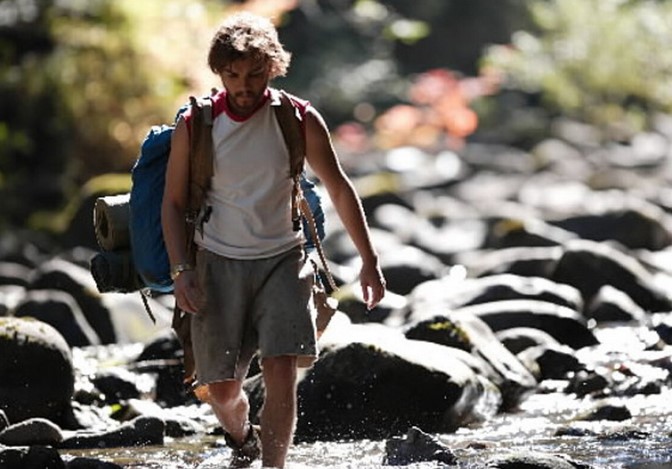 Jon Krakauer’s Into the Wild is a compelling and thought-provoking book that follows the life and journey of Chris McCandless, a young man whose desire to escape societal expectations led him into the remote wilderness of Alaska. The Into the Wild book review delves into the key aspects of McCandless’s journey, exploring not only his motivations but also the emotional and philosophical elements that shaped his life and ultimate fate. Through meticulous research and in-depth interviews, Krakauer uncovers the reasons behind McCandless’s unconventional decision to abandon his privileged life and venture into the unknown. In this article, we will explore the themes, characters, and impact of Into the Wild, shedding light on the reasons why it remains a powerful story that resonates with readers around the world.
Jon Krakauer’s Into the Wild is a compelling and thought-provoking book that follows the life and journey of Chris McCandless, a young man whose desire to escape societal expectations led him into the remote wilderness of Alaska. The Into the Wild book review delves into the key aspects of McCandless’s journey, exploring not only his motivations but also the emotional and philosophical elements that shaped his life and ultimate fate. Through meticulous research and in-depth interviews, Krakauer uncovers the reasons behind McCandless’s unconventional decision to abandon his privileged life and venture into the unknown. In this article, we will explore the themes, characters, and impact of Into the Wild, shedding light on the reasons why it remains a powerful story that resonates with readers around the world.
The Life of Chris McCandless: A Young Man Seeking Meaning
Chris McCandless’s story is both inspiring and tragic, a journey that combines a search for self-discovery with the harsh realities of nature. McCandless, born into a wealthy family in 1968, was a college graduate who chose to abandon the comforts of his upbringing to live a life of adventure, free from societal pressures and materialism. After graduation, he changed his name to “Alexander Supertramp,” symbolizing his desire for freedom and his break from his former identity.
Krakauer’s exploration of McCandless’s motivations offers insight into his complex personality. McCandless was deeply influenced by literature, particularly the works of authors like Jack London, Leo Tolstoy, and Henry David Thoreau. These writers promoted the idea of individualism, self-sufficiency, and a return to nature—concepts that resonated with McCandless, who saw them as a path to enlightenment. However, McCandless’s idealism and romanticized view of the wilderness ultimately led him to make decisions that would prove fatal.
1. A Journey Into the Unknown
McCandless’s journey began after he donated all his savings to charity, abandoned his car, and set off on a cross-country adventure in 1990. He hitchhiked across the United States, taking on odd jobs along the way, all the while rejecting the traditional values of his family and society. In a way, McCandless was trying to create his own version of the American Dream—one that was based on simplicity, self-reliance, and a deep connection to the wilderness.
His journey took him to some of the most remote corners of the country, from the deserts of Arizona to the forests of Oregon. Eventually, McCandless found his way to Alaska, where he hoped to live off the land in complete isolation. It was here, in the wilds of Alaska, where McCandless’s story took its tragic turn. He found an abandoned bus in the woods, which he dubbed the “Magic Bus,” and decided to make it his home.
While McCandless was undoubtedly passionate and idealistic, he lacked the practical skills necessary to survive in such a harsh environment. His story is a reminder that idealism must sometimes be tempered with realism, especially when it comes to surviving in the wilderness.
The Themes of Into the Wild: Idealism, Self-Discovery, and Tragedy
One of the most striking aspects of Into the Wild is how Krakauer explores the themes of idealism and self-discovery. McCandless’s quest to leave behind a life of privilege in search of something more meaningful resonates with readers who may also feel the weight of societal expectations. However, McCandless’s journey also raises questions about the limits of self-reliance and the dangers of romanticizing the wilderness.
1. The Cost of Idealism
McCandless’s pursuit of a life free from society was undoubtedly driven by a desire for authenticity and a rejection of materialism. His heroes—authors like Thoreau—lived simple, solitary lives in tune with nature, and McCandless sought to emulate them. However, as Krakauer reveals through his research, McCandless’s idealism was also his downfall.
McCandless’s inability to reconcile his ideals with the realities of the Alaskan wilderness highlights the dangers of pursuing a dream without fully understanding its implications. He failed to prepare adequately for his journey, lacked proper survival skills, and underestimated the dangers of living in such a harsh environment. In the end, these oversights contributed to his tragic death from starvation in 1992.
2. The Impact of Family and Upbringing
Another key theme in Into the Wild is McCandless’s strained relationship with his family. His decision to sever ties with his parents and siblings was rooted in his anger toward their materialistic values and the fractured dynamics within the family. McCandless’s father, Walt, was a successful businessman, but he was also a controlling and demanding figure, and McCandless felt alienated by his father’s expectations.
In many ways, McCandless’s journey can be seen as a rebellion against the life he felt trapped in. His departure from his family and society was not just about seeking adventure but also about escaping the emotional baggage of his upbringing. Krakauer’s portrayal of McCandless’s relationship with his family adds depth to the story, illustrating how the past can influence our decisions and actions in ways we may not fully understand.
Krakauer’s Narrative and the Search for Meaning
Jon Krakauer’s approach in telling McCandless’s story is both empathetic and investigative. Into the Wild is not just a biography of a young man who sought adventure in the wilderness—it is also a reflection on the meaning of life, the search for purpose, and the consequences of pursuing one’s ideals without fully understanding the cost.
Krakauer uses his own experiences as a young man to parallel McCandless’s journey, allowing readers to see how universal themes of independence, risk-taking, and self-discovery are. Krakauer’s personal connection to McCandless’s story deepens the emotional weight of the narrative, and his ability to gather testimonies from people who encountered McCandless along his journey adds an additional layer of complexity to the story.
1. A Cautionary Tale
Ultimately, Into the Wild serves as a cautionary tale about the risks of living a life in pursuit of ideals without regard for the practicalities of survival. While McCandless’s story is inspiring in its pursuit of freedom and self-discovery, it also raises questions about the importance of balance. Idealism must be tempered with preparation and an understanding of the realities that exist outside of one’s personal philosophy. McCandless’s tragic death in the wilderness is a stark reminder of the delicate line between self-discovery and self-destruction.
In conclusion, the Into the Wild book review shows that Chris McCandless’s journey continues to resonate with readers for its raw exploration of the human desire for freedom and meaning. His story is a powerful reminder of the complex intersection between idealism, self-discovery, and the realities of life. Through Krakauer’s meticulous storytelling, McCandless’s life becomes both a cautionary tale and an inspiration for those who seek to understand themselves and the world around them. McCandless’s journey may have ended in tragedy, but his story continues to inspire conversations about the nature of adventure, the pursuit of meaning, and the importance of understanding the world before venturing into it. Into the Wild is more than just a biography—it is a meditation on the human spirit, the search for truth, and the consequences of living according to one’s ideals.
Toonily.net: Your Source for Manga and Webtoon Delights
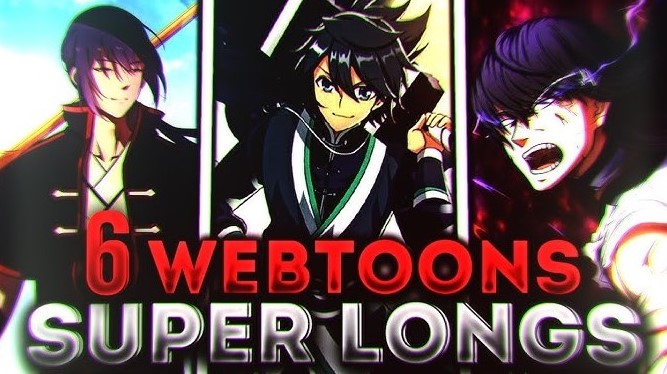
Source:https://www.holidaysundirect.com
In the world of digital comics, few platforms stand out as much as Toonily.net. This website has become a go-to destination for manga and webtoon enthusiasts looking for an expansive library of stories, characters, and art styles. Whether you’re a long-time fan of Japanese manga or new to the exciting world of webtoons, Toonily.net offers a treasure trove of content that caters to a diverse audience. In this article, we’ll explore the unique features, user experience, and diverse content offerings that make Toonily.net a must-visit site for anyone looking to dive into the world of digital comics.
What Makes Toonily.net Stand Out?
Toonily.net is quickly gaining a reputation as one of the top platforms for manga and webtoon lovers. But what makes this site stand out from the many other digital comic providers available today? Below, we’ll explore some of the key elements that set Toonily.net apart from the rest.
1. A Vast Collection of Manga and Webtoons
The primary reason Toonily.net has gained such popularity is its extensive collection of both manga and webtoons. Manga, which originated in Japan, has a distinct art style and storytelling approach that many fans adore. Webtoons, on the other hand, are digital comics that are typically produced in Korea, with a more vertical scroll format that is optimized for smartphone viewing.
Toonily.net excels in offering both of these formats in a seamless, easy-to-navigate manner. Whether you’re in the mood for a long-running manga series or a fresh webtoon, the site offers thousands of titles across various genres, including action, romance, fantasy, horror, and comedy. The platform continually updates its collection, making sure that there is always something new for readers to enjoy.
2. Accessible and User-Friendly Interface
One of the standout features of Toonily.net is its user-friendly interface. Unlike some other websites that may have cluttered layouts or difficult-to-navigate designs, Toonily.net provides a clean, intuitive interface that allows users to quickly find and start reading their favorite comics.
The homepage is well-organized with easy access to trending titles, new releases, and top genres. You can filter your search by category, popularity, or rating, making it simple to find exactly what you’re looking for. Additionally, the site is optimized for both desktop and mobile use, allowing you to enjoy your comics on the go.
3. Free Access to Most Content
While many manga and webtoon platforms require a subscription or payment to access premium content, Toonily.net stands out by offering free access to a majority of its vast library. While there are premium titles that might require a small payment or subscription, the site ensures that you can read most of the content without paying a dime. This accessibility makes Toonily.net an attractive option for those who may not want to commit to a subscription but still want to enjoy high-quality digital comics.
How Toonily.net Enhances Your Reading Experience
Toonily.net doesn’t just stop at offering a wide variety of manga and webtoons—it also strives to enhance the reading experience in multiple ways. Here are some key features that elevate the enjoyment of reading on this platform:
1. High-Quality Scans and Translations
One of the biggest concerns for digital comic readers is the quality of the scans and translations. Poor translations or low-quality images can detract from the enjoyment of the story. Fortunately, Toonily.net ensures that all of its content is presented with high-quality scans and accurate translations. This attention to detail ensures that the story is clear, easy to follow, and visually stunning.
Whether you’re reading a high-octane action manga or an emotionally-driven romance webtoon, the quality of the presentation can make all the difference. Toonily.net consistently meets the expectations of its audience by offering crisp, well-translated content that doesn’t compromise on the art or storytelling.
2. Regular Updates and New Releases
To keep readers coming back for more, Toonily.net regularly updates its library with new chapters and new series. Manga and webtoon creators often release content on a weekly or monthly basis, and Toonily.net ensures that these updates are made available as soon as they’re released. This means that readers don’t have to wait long for the next chapter in their favorite series.
Additionally, the platform offers a variety of genres and sub-genres, allowing users to explore and discover new content that they may not have encountered before. If you’re someone who enjoys experimenting with different styles of storytelling, Toonily.net provides a great opportunity to broaden your reading horizons.
3. Community Engagement and Recommendations
Toonily.net also allows readers to engage with the community by offering ratings, reviews, and recommendations. This user-generated content creates a sense of community around the platform, where readers can share their thoughts on specific titles and discover new comics based on recommendations from others. Whether it’s reading user reviews or participating in discussions about your favorite manga, the community aspect of Toonily.net helps build a more interactive experience.
The Future of Toonily.net and Digital Comics
As the digital comic world continues to grow, so does the potential for platforms like Toonily.net. The site is constantly evolving to meet the needs of its audience, with frequent updates to both its library and user interface. As more readers discover the joys of manga and webtoons, Toonily.net is well-positioned to remain a central hub for these vibrant, global communities.
The future of Toonily.net looks promising, especially as digital comics continue to gain in popularity. With the rise of mobile technology and more people turning to digital platforms for their reading needs, Toonily.net’s model of free and easy access to manga and webtoons could serve as a blueprint for other digital comic platforms.
Additionally, the platform’s continued dedication to providing high-quality content, regular updates, and user-friendly navigation ensures that it will remain a top destination for digital comic readers for years to come. Whether you’re looking to read the latest chapter of a trending manga or explore an undiscovered webtoon gem, Toonily.net offers something for everyone.
Toonily.net has firmly established itself as a premier source for both manga and webtoon lovers. With its vast library, high-quality scans, regular updates, and user-friendly interface, it offers an unparalleled reading experience. Whether you’re new to digital comics or a seasoned reader, Toonily.net provides endless hours of entertainment, exploring new worlds, and connecting with like-minded fans. As digital comics continue to rise in popularity, Toonily.net remains a standout platform for manga and webtoon enthusiasts seeking quality, accessibility, and variety. If you’re looking for your next great read, Toonily.net is the place to go.





